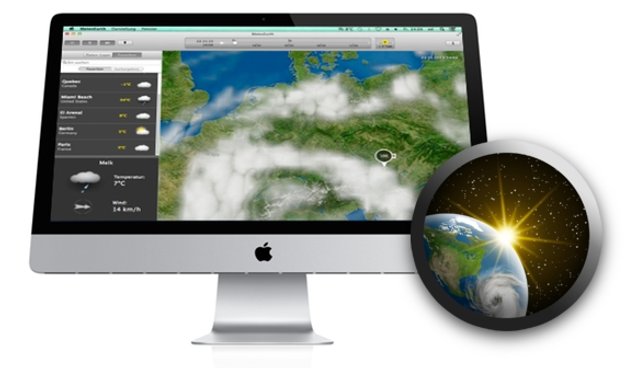

- #METEOEARTH ONLINE APP FOR WINDOWS HOW TO#
- #METEOEARTH ONLINE APP FOR WINDOWS SOFTWARE#
- #METEOEARTH ONLINE APP FOR WINDOWS CODE#
In this paper, we take a holistic perspective and provide a survey of ensemble visualization. However, the lack of reflections on those essential commonalities and a systematic overview of those works prevents visualization researchers from effectively identifying new or unsolved problems and planning for further developments. From the data analysis point of view, it can be observed that many ensemble visualization works focus on the same facet of ensemble data, use similar data aggregation or uncertainty modeling methods. Over the last decade, ensemble visualization has witnessed a significant development due to the wide availability of ensemble data, and the increasing visualization needs from a variety of disciplines. Our results demonstrate both ease-of-use and the rich capabilities of VAPOR in such a use case. Finally, we illustrate VAPOR's utility in the study of a numerically-simulated tornado. We also describe VAPOR's visualization capabilities, paying particular attention to features for geo-referenced data and advanced rendering algorithms suitable for time-varying, 3D data. We specifically describe VAPOR's ability to handle ESS simulation data from a wide variety of numerical models, as well as a multi-resolution representation that enables interactive visualization on very large data while using only commodity computing resources. This paper presents VAPOR: a domain-specific visualization package that targets the specialized needs of ESS modelers, particularly those working in research settings where highly-interactive exploratory visualization is beneficial. However, within ESS, specialized visualization requirements and data models, particularly for those data arising from numerical models, often make general purpose visualization packages difficult, if not impossible, to use effectively. Visualization is an essential tool for analysis of data and communication of findings in the sciences, and the Earth System Sciences (ESS) are no exception.
#METEOEARTH ONLINE APP FOR WINDOWS SOFTWARE#
Compared with other software tools, it provides some distinctive features including integrated two‐dimensional (2D) and three‐dimensional (3D) rendering, comprehensive support of popular data formats, vector graphics export and cross‐platform compatibility. It consists of a developer‐orientedcross‐platform framework and several reference applications built upon the framework.

MeteoExplorer is a software tool designed for analysing and visualizing atmospheric and geoscience data. MeteoExplorer is an exploratory project that provides forecasters with new techniques for climate diagnosis and forecasts. These applications support the analysis and visualization of numerous data set types, as well as the interactive content creation. Based on the foundation libraries, the software can develop web, desktop and mobile applications for meteorological purposes. Compared with other software tools, the framework provides distinctive features, including a unified framework that integrates both 2D and 3D rendering context, comprehensive support of popular data formats and computing platforms, decent rendition quality via the export of vector graphics and page layout customization, and interactive composition of synoptic charts.
#METEOEARTH ONLINE APP FOR WINDOWS CODE#
Modules in the framework are loosely coupled with minimum interdependencies to facilitate code reuse and improve code efficiency. The framework is developed with C++ on the central processing unit side and shader languages on the graphics processing unit (GPU) side. It consists of a developer‐orientedcross‐platform foundation framework and several applications built upon the framework. The paper presents MeteoExplorer: a software tool designed to analyse and visualize atmospheric and geoscience data.
#METEOEARTH ONLINE APP FOR WINDOWS HOW TO#
However, how to provide an intuitive way to combine traditional two‐dimensional (2D) methods essential in operational weather forecasting and new 3D techniques welcomed in atmospheric research is not fully investigated, if not overlooked, in these tools. Over recent years, several visualization tools that offer advanced three‐dimensional (3D) rendering techniques, while still showing good performance for large data sets, have been developed.


 0 kommentar(er)
0 kommentar(er)
